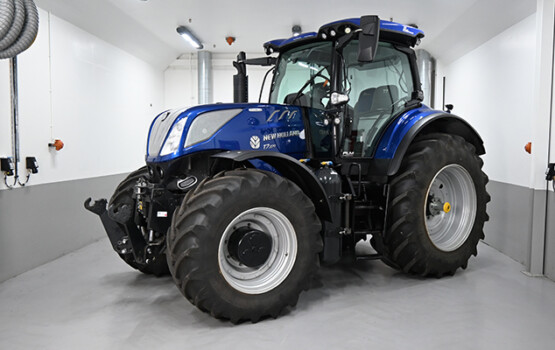Portal for more climate-friendly mobility
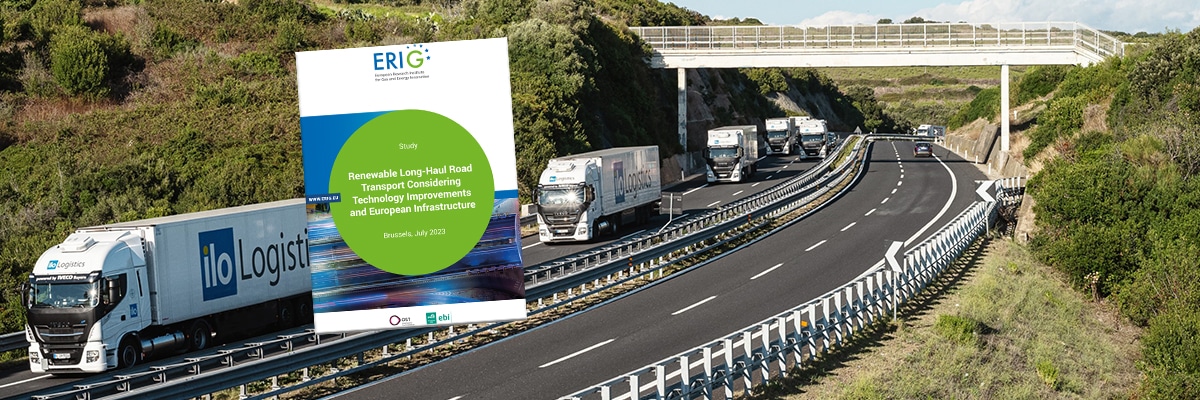
At least 37 percent renewable
The European Research Institute for Gas and Energy Innovation (ERIG) concludes in its latest study that at least 37 percent of the European truck fleet must be powered by renewable energies by 2030 – otherwise the climate targets will be missed.
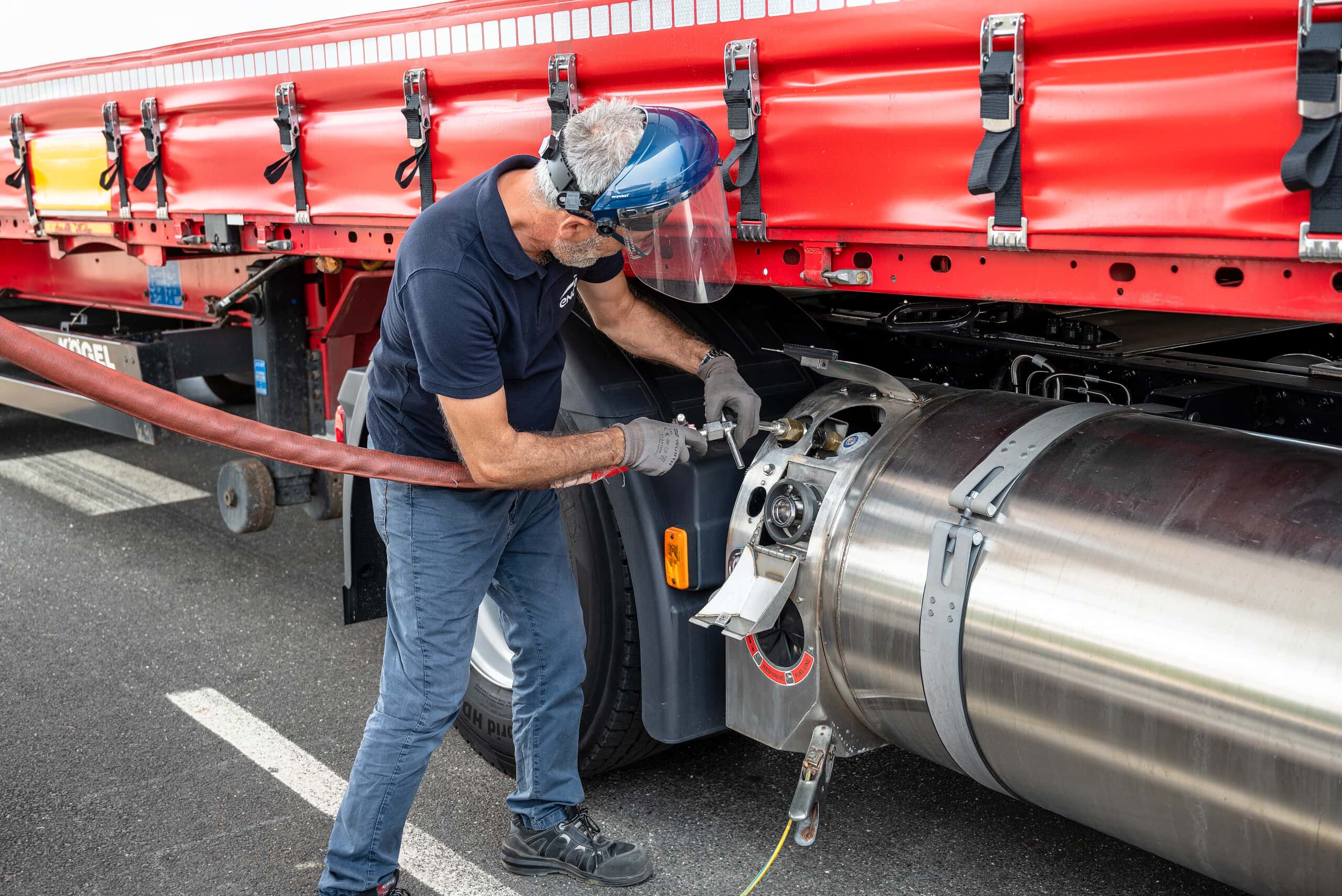 In heavy goods transport, more and more trucks with CNG drive – or as in the picture – with LNG drive are in use throughout Europe. Source: Iveco
In heavy goods transport, more and more trucks with CNG drive – or as in the picture – with LNG drive are in use throughout Europe. Source: Iveco
The use of CNG and liquefied LNG reduces emissions in the transport sector, especially because compressed biogas or liquefied biogas – i.e. bio-LNG/LBG – is increasingly being used and utilised, with which the vehicles drive in an almost climate-neutral manner. Throughout Europe, interest in trucks with LNG drives is increasing, especially in heavy goods transport, as shown by new registrations in Germany, for example. While 323 heavy trucks and tractors with CNG or LNG drive were newly registered there in the second quarter of 2023, there were only 147 with electric drive, ten with hydrogen fuel cell drive and two with hybrid drive.
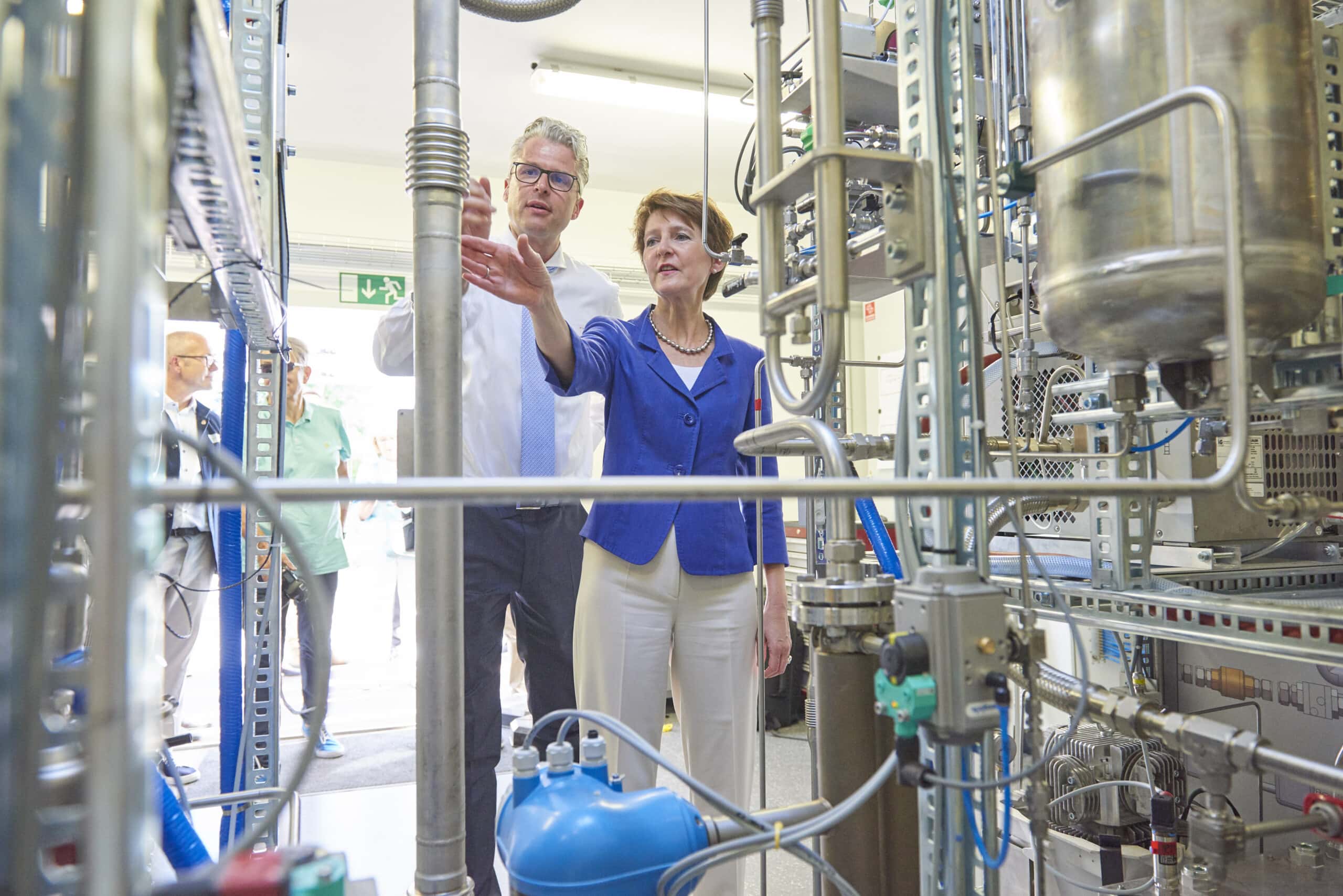 Professor Markus Friedl from the University of Applied Sciences of Eastern Switzerland (OST) explains the functioning of a power-to-gas plant to the then Federal Councillor Simonetta Sommaruga. Source: OST/Swisscleantech
Professor Markus Friedl from the University of Applied Sciences of Eastern Switzerland (OST) explains the functioning of a power-to-gas plant to the then Federal Councillor Simonetta Sommaruga. Source: OST/Swisscleantech
In its latest study, the European Research Institute for Gas and Energy Innovation (ERIG) has analysed both quantitatively and qualitatively the most promising technologies that allow a reduction of emissions in heavy-duty transport and thus bring the EU closer to its ambitious climate targets. And Markus Friedl and Elimar Frank from the University of Applied Sciences of Eastern Switzerland (OST) and their European colleagues took a close look at the entire range of drive systems. They examined battery-powered electric vehicles (BEV), hydrogen-powered fuel cell electric vehicles (H2, FCEV) as well as vehicles with internal combustion engines (ICE) that run on renewable methane (CH4, biogas and synthetic methane) and the two renewable liquid fuels e-diesel and HVO.
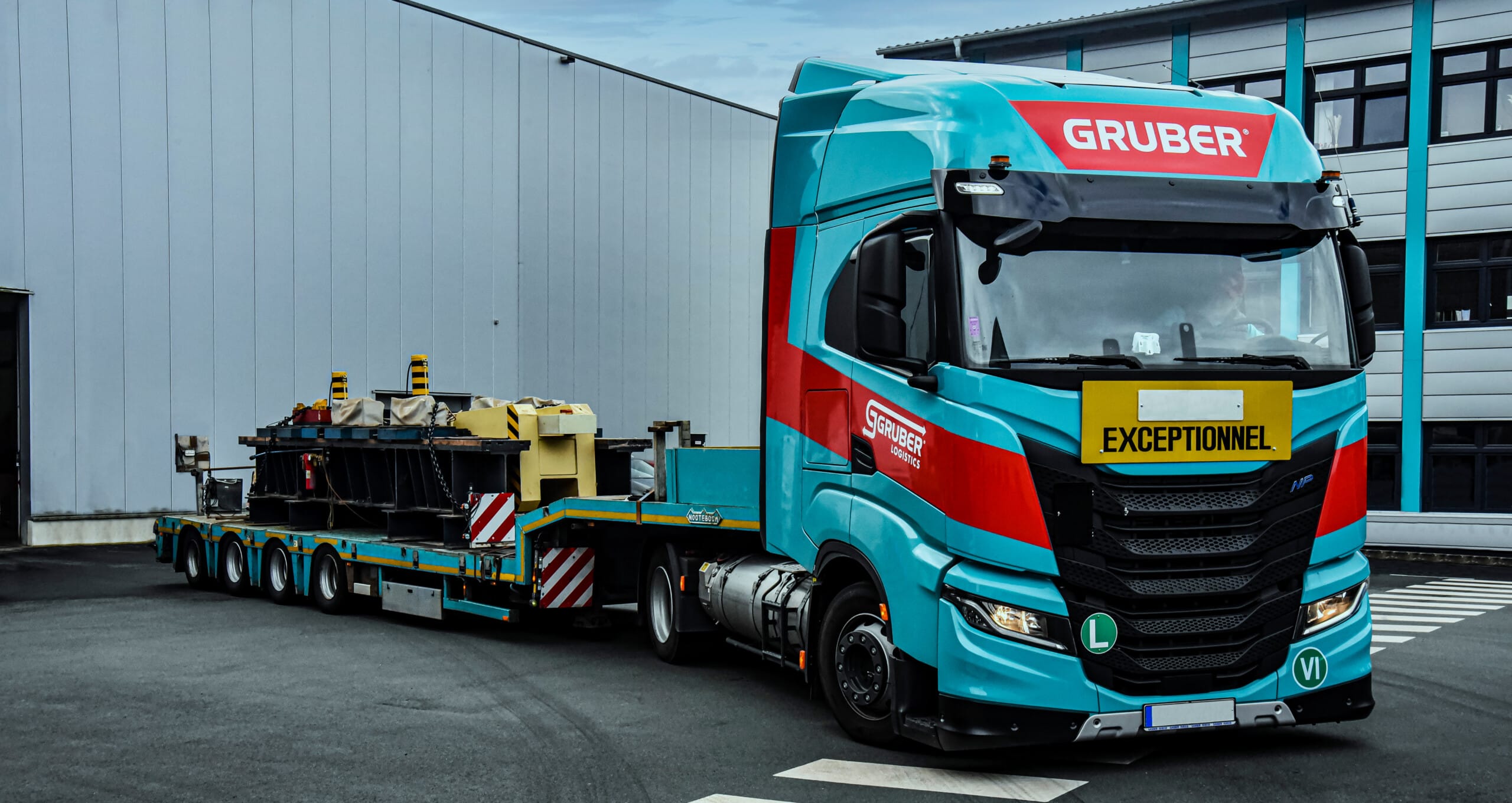 Whether silos, tanks, special components, containers or work and agricultural machinery, the XTL department of Gruber Logistics takes care of their safe and most sustainable transport with the LNG-powered Iveco. Source: Gruber Logistics
Whether silos, tanks, special components, containers or work and agricultural machinery, the XTL department of Gruber Logistics takes care of their safe and most sustainable transport with the LNG-powered Iveco. Source: Gruber Logistics
The comprehensive ERIG analysis also used a well-to-wheel approach and thus considered the entire energy input from extraction and provision to use as propulsion energy. Even if existing or in the process of consultation, legally binding EU emission targets and legislation do not take into account the entire life cycle of long-distance road transport, but mostly only follow the well-to-tank (source-to-tank) or tank-to-wheel (tank-to-wheel) approach, thus obscuring the potential of actual overall emission reductions.
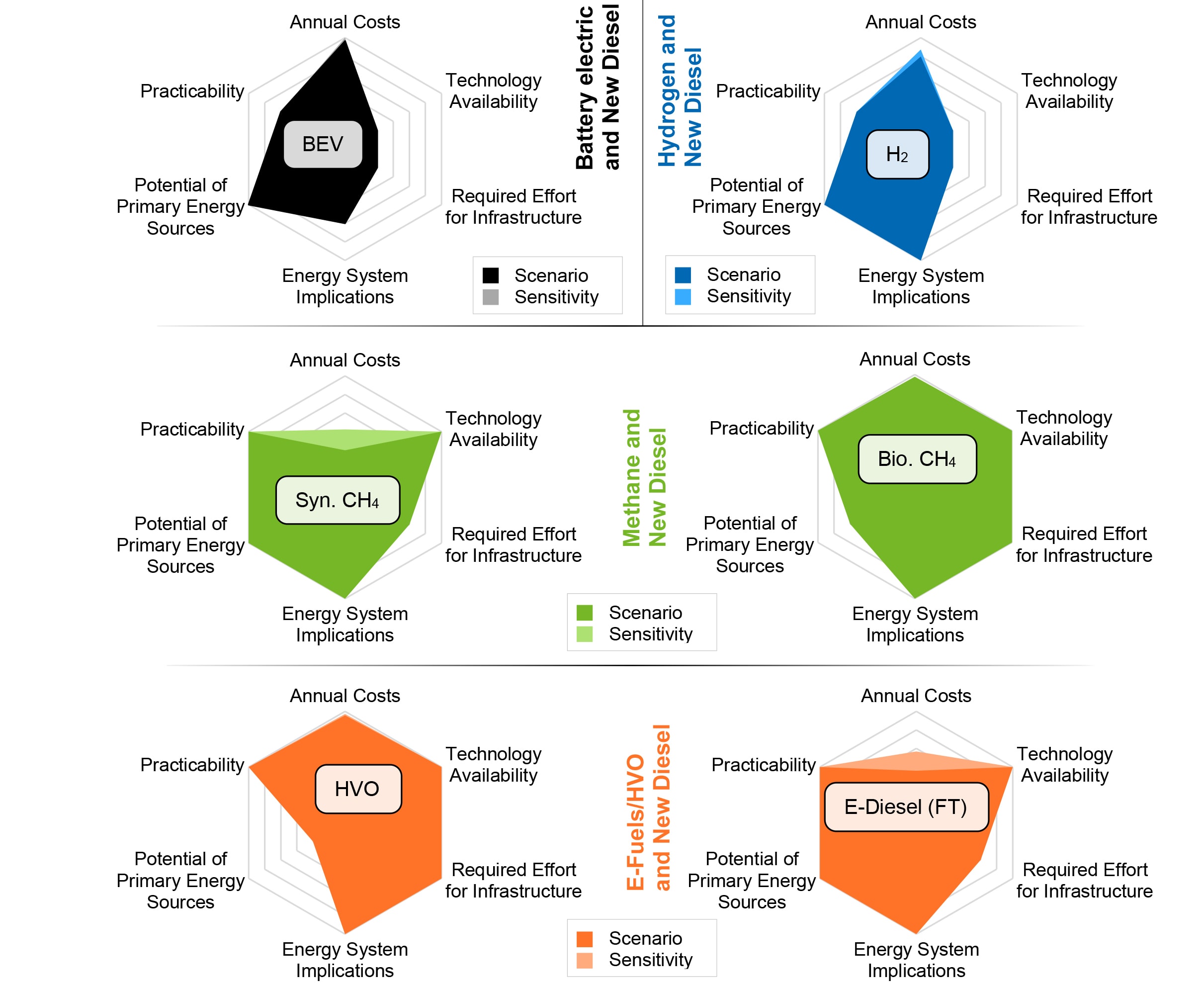 The six scenarios for the different drive types from the ERIG study. Source: ERIG
The six scenarios for the different drive types from the ERIG study. Source: ERIG
For each of the propulsion technologies and all energy supply paths, the researchers have developed a theoretical so-called exclusive scenario. This consists of a fleet with a share of renewable fuel trucks using a particular technology and new diesel trucks for the remaining share, in each case to achieve the emission reduction targets of 40 percent less CO2 compared to 2005 by 2030. The study shows that in all scenarios, at least 37 percent of the European truck fleet must be powered by renewable energy. This means that an enormous number of trucks must still be put on the road with CNG and LNG propulsion, among other things, and ideally biogas or LBG/Bio-LNG in the tank.
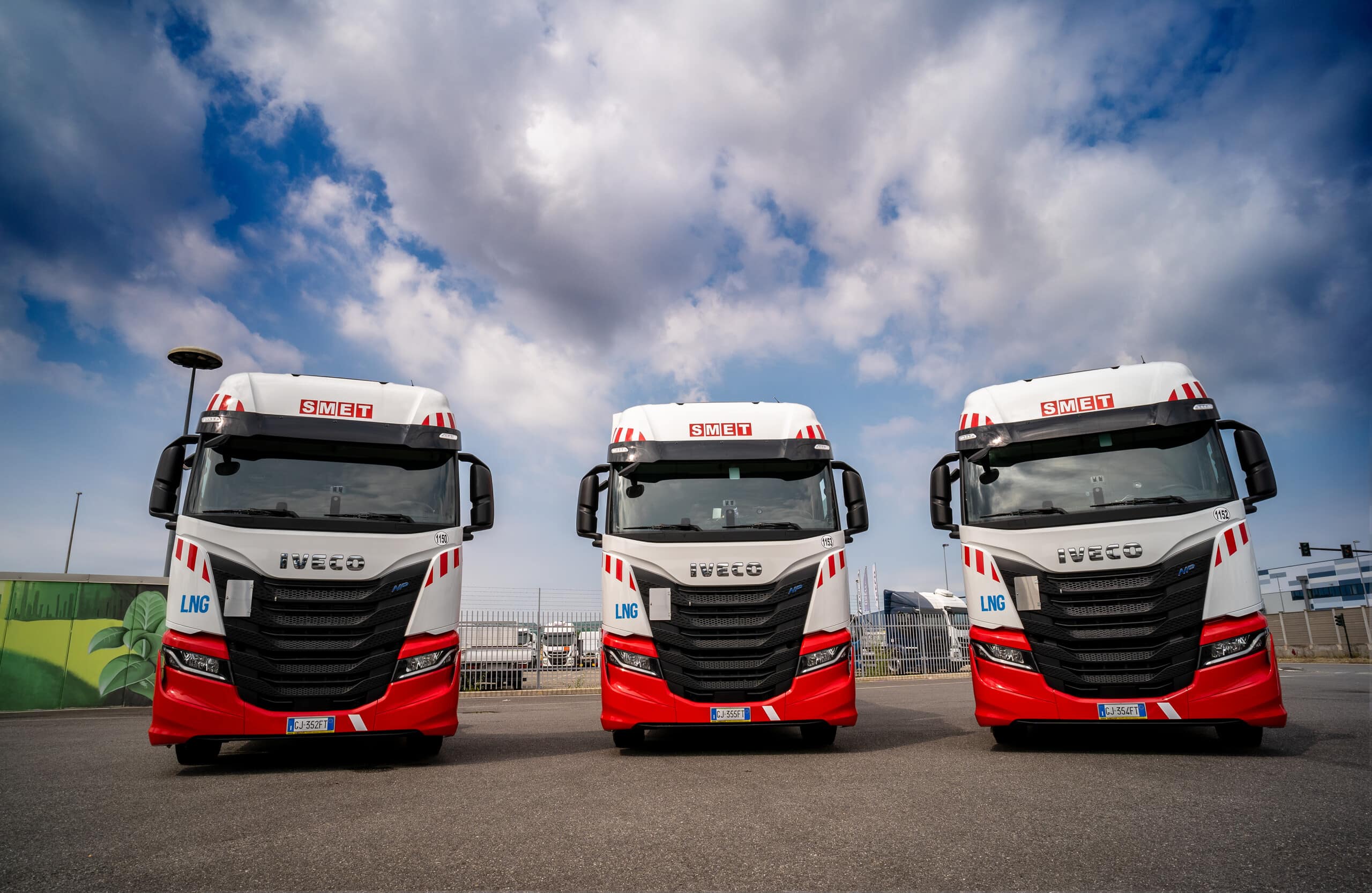 Chairman Domenico De Rosa’s Italian Smet Group uses more than 40 Iveco S-Way with LNG propulsion. Source: Iveco
Chairman Domenico De Rosa’s Italian Smet Group uses more than 40 Iveco S-Way with LNG propulsion. Source: Iveco
While the scenarios “battery-electric and new diesel” and “hydrogen and new diesel” are quite competitive from a cost perspective, they have clear disadvantages in other dimensions of the evaluation, such as technology availability, investment costs for infrastructure and practicability. The scientists name biogas as the low-cost option in the scenarios, which is also supplemented by synthetic methane in the exclusive scenario. What is also exciting: Markus Friedl, Elimar Frank and their colleagues come to the conclusion that if biogas from manure were used in combination with new diesel, only 15 percent of the truck fleet would even have to use renewable energy by 2030. If the negative GHG emissions of biogas from slurry were also officially credited to heavy-duty transport, there is an even higher CO2 reduction opportunity here.
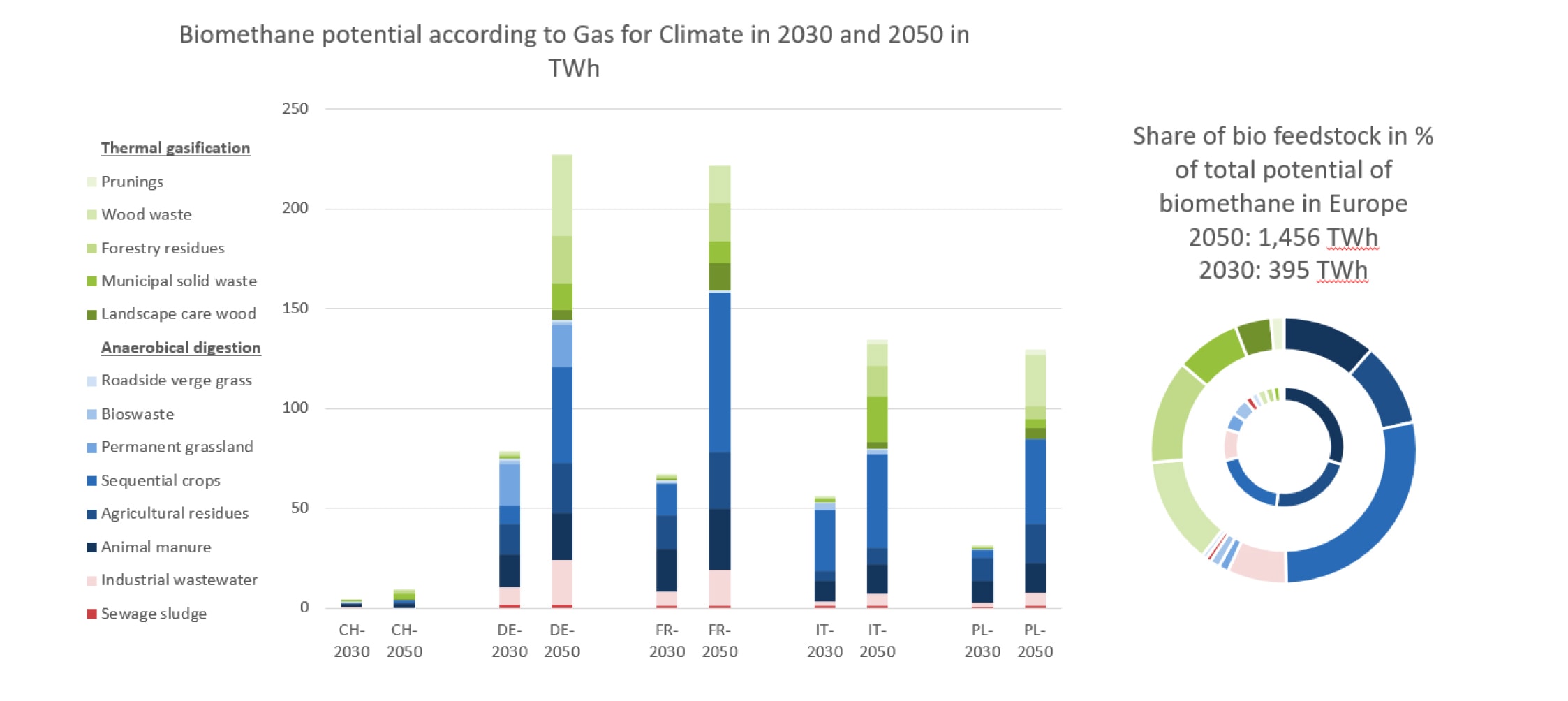 Source: ERIG
Source: ERIG
It is also worth noting that even new diesel vehicles, if applied gradually, can bring about a considerable reduction in GHG emissions by 2030, even if this is not enough to meet the set target. The scientists’ most important recommendations: Strict and fair regulations so that all renewable technologies can contribute to the greenhouse gas targets. In addition, greenwashing should be made impossible. And the scientists advocate that at least well-to-wheel approaches should be used in future for emission targets for heavy goods traffic. (pd/jas, 17 August 2023)
The entire ERIG Long Distance Transport Study as PDF is available here.
You might also be interested in
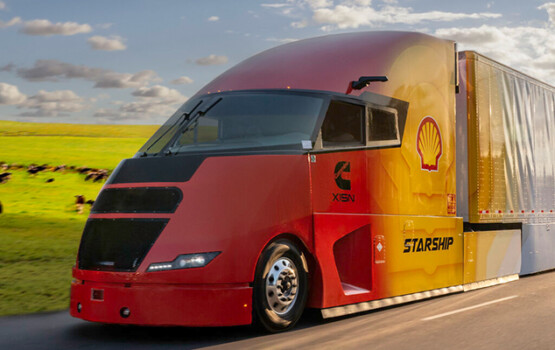
Shell Starship on record hunt
